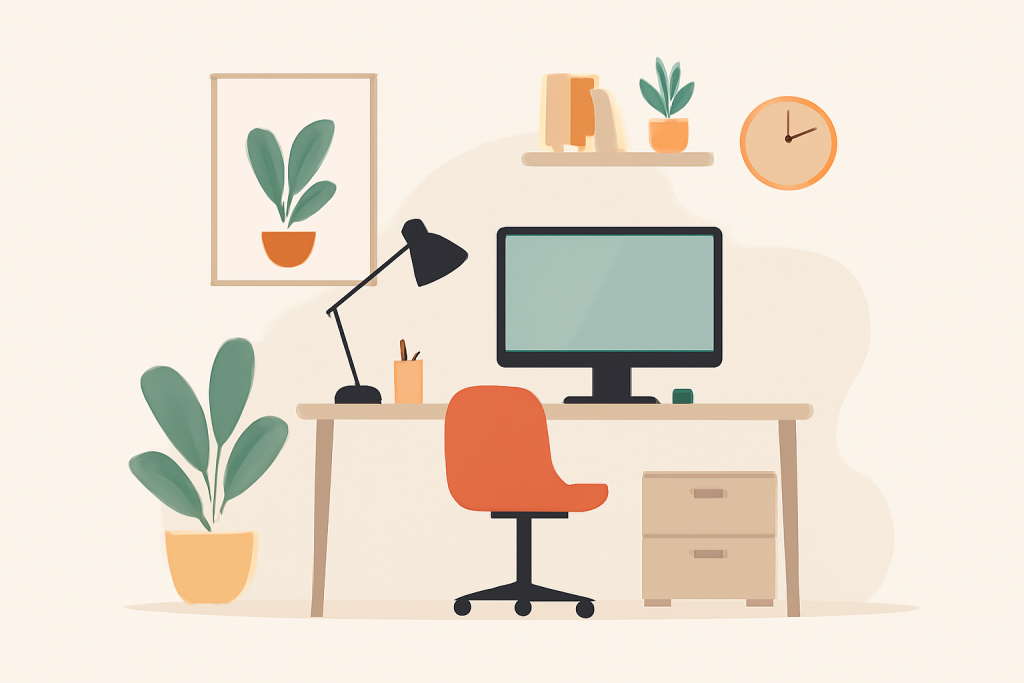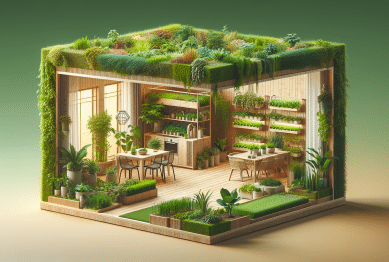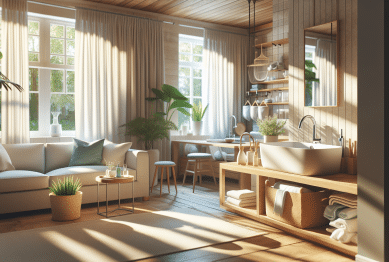Maintaining productivity at work can be challenging. Whether you’re working from home or in an office, distractions and clutter can make it difficult to focus. A minimalist workspace is an emerging trend that offers a simple yet powerful solution to this problem. By reducing clutter and organizing your space with intention, a minimalist workspace can significantly enhance your focus, efficiency, and overall productivity.
This article will explore the benefits of a minimalist workspace, how to create one, and the positive impact it can have on your daily work habits.

What is a Minimalist Workspace?
A minimalist workspace involves creating an environment that is clean, organized, and free of unnecessary distractions. The concept stems from the broader minimalist philosophy, which emphasizes simplicity and function over excess. When applied to a workspace, minimalism focuses on reducing the number of items in your environment to only those that serve a purpose or bring value to your workday.
Instead of an overflowing desk with papers, gadgets, and trinkets, a minimalist workspace typically features just the essentials—items that enhance focus and efficiency. Think of a clean desk, a comfortable chair, an effective computer setup, and a few carefully selected tools to keep things streamlined.
Why a Minimalist Workspace Boosts Productivity
1. Reduced Distractions
Clutter is one of the leading sources of distraction. A messy desk can overwhelm your mind and make it difficult to focus on the task at hand. When your environment is clean and organized, your brain can better prioritize tasks, allowing you to focus more effectively on your work.
According to a study published in the Journal of Neuroscience, physical clutter can trigger a stress response in the brain, which can lead to decreased cognitive function and impaired concentration. By minimizing clutter, you create a more peaceful and focused environment that promotes productivity.
2. Improved Mental Clarity
A clutter-free environment has a calming effect on the mind. When surrounded by unnecessary items, your brain is constantly processing the information, which can lead to mental fatigue. A minimalist workspace allows you to focus on the task in front of you, leading to better mental clarity and decision-making.
In fact, research shows that simplifying your environment can improve cognitive performance. A study by the Princeton University Neuroscience Institute found that reducing visual distractions helps people concentrate better, increasing mental clarity and focus.
3. Enhanced Organization
A minimalist workspace is inherently more organized. By keeping only the items that are necessary and functional, you eliminate the chaos that often comes with an overcrowded workspace. This organization helps you stay on top of your tasks and work more efficiently.
With fewer things to manage, it’s easier to find what you need, whether it’s a file, a notebook, or a pen. The time saved from searching for things can add up, leading to more productive days.
4. Encourages Mindfulness
A minimalist workspace can also foster mindfulness. Mindfulness is the practice of being present and aware in the moment, and a clean, minimalist environment can make it easier to engage in this practice. With fewer distractions, you can focus on your work with greater attention, which can improve the quality of your output.
Moreover, mindfulness practices have been shown to reduce stress and increase overall well-being. A minimalist workspace can act as a physical representation of this mindfulness, helping to align your workspace with your mental state.
How to Create a Minimalist Workspace
Creating a minimalist workspace doesn’t have to be a daunting task. With a few simple steps, you can transform your environment into a productive, clutter-free zone.
1. Start with the Essentials
Begin by clearing your desk of any non-essential items. Only keep what you truly need to get the job done. This might include your computer, notepad, a few pens, and any reference materials you frequently use. Avoid keeping items that are purely decorative or irrelevant to your work tasks.
2. Embrace Digital Tools
Digital tools can help reduce physical clutter. Consider moving your documents to the cloud, using digital calendars and to-do lists, and opting for online note-taking apps instead of physical notebooks. This reduces the number of papers and files cluttering your desk, making it easier to maintain an organized workspace.
3. Invest in Quality, Functional Furniture
Choose a comfortable chair and an ergonomic desk that suits your needs. A clean, functional workspace is not only about reducing clutter, but also about creating a space that supports your work habits. Invest in items that will make you comfortable and efficient, such as a good quality chair, a spacious desk, and a monitor stand.
4. Maintain a Simple Color Scheme
Choose a neutral color palette for your workspace to promote a calming atmosphere. Soft tones like whites, grays, and beige can help create a serene environment. Bright, bold colors may be energizing, but they can also become overwhelming in a workspace. Keep the color scheme simple to avoid overstimulation.
5. Organize Your Files and Documents
Organizing your digital files is just as important as keeping your physical space tidy. Use clearly labeled folders and organize your files by categories that make sense to you. For physical documents, invest in a filing system to keep important papers organized and easy to access.
Additional Tips for Maintaining a Minimalist Workspace
- Declutter Regularly: Make it a habit to tidy up your workspace at the end of each day. This helps prevent unnecessary clutter from building up and keeps your workspace ready for the next day.
- Keep Personal Items to a Minimum: While personal items like photos or plants can bring warmth to a workspace, limit them to only a few that truly inspire you. Too many personal items can detract from the minimalist feel.
- Use Multi-Functional Furniture: Opt for furniture pieces that serve more than one purpose. For example, a desk with built-in storage can help keep your workspace tidy while providing a clean surface for your work.
- Use Vertical Space: Utilize shelves or wall organizers to keep items off your desk and maximize space. This can help maintain a clean, open workspace.
The Impact of a Minimalist Workspace on Long-Term Productivity
Over time, the benefits of a minimalist workspace compound. As you maintain an organized, distraction-free environment, you’ll likely notice increased focus, reduced stress, and improved efficiency. This long-term impact can positively affect not just your productivity but also your overall well-being at work.
By simplifying your workspace, you free up mental energy that would otherwise be spent dealing with clutter. This allows you to direct your attention where it matters most—on your tasks and projects. With consistent effort, your minimalist workspace will become a cornerstone of your productive work habits.
Conclusion
A minimalist workspace isn’t just a design trend—it’s a practical approach to enhancing productivity. By eliminating distractions, fostering mental clarity, and promoting better organization, a minimalist workspace can help you stay focused and efficient throughout the day. With a few simple changes, you can create an environment that supports your best work and helps you achieve your professional goals.
References:
- Princeton University Neuroscience Institute. (2011). Effects of Physical Clutter on Cognitive Performance.
- Journal of Neuroscience. (2019). Clutter and Its Cognitive Impact.
- Harvard Business Review. (2020). How Your Workspace Affects Your Productivity.









